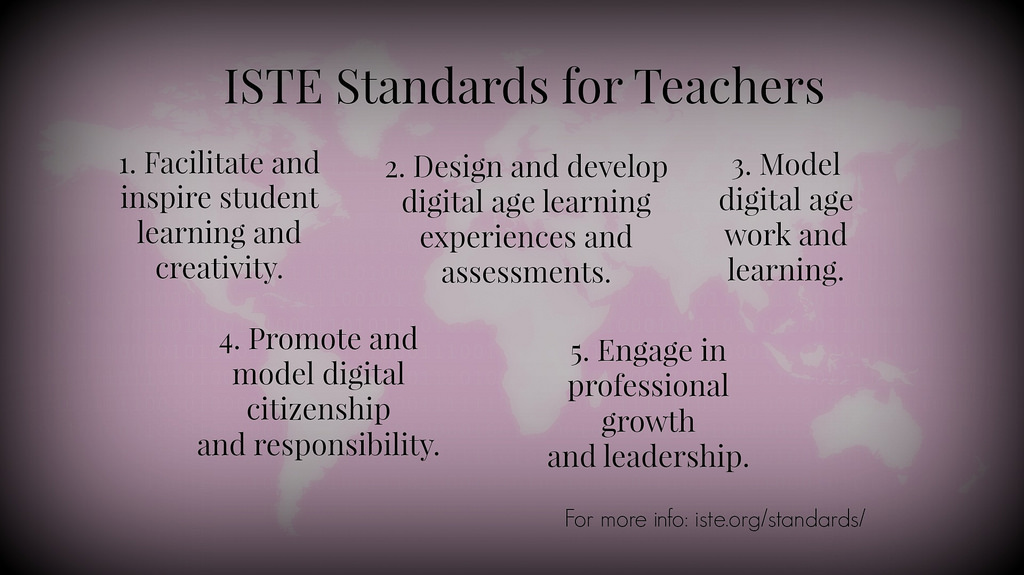As promised, we will be discussing the ISTE Standards for Students, and ideas for implementing them into your classroom. The first standard is Creativity and Innovation.
The standard says, “Students demonstrate creative thinking, construct knowledge, and develop innovative products and processes using technology.” While teachers work diligently to establish creativity and build knowledge, we should be asking ourselves how to do this using digital tools.
Sub-standard 1a says, “Students apply existing knowledge to generate new ideas, products or processes.” This standard points to the need not to teach students to use specific tools for a project, but rather to teach them how to apply the tools they already know how to use in new and interesting ways. For example, if a student already knows how to use a digital camera to take pictures, and how to upload and insert them, then he/she could use those pictures to make a brochure, a slideshow presentation, write a digital story, or make a blog post. All of these projects could meet the same standard(s) but gives the student a choice in how he/she presents it.
Sub-standard 1b says, “Students create original works as a means of personal or group expression.” Original works are creations by students. Examples of original works can be posters, multimedia slideshows, videos, infographics, and comic strips. An example of a student project would be to find an historical photograph and caption it, or add a speech bubble to it. Another example could be to have students generate a comic strip that retells an historical event or a scientific process.
Sub-standard 1c states, “Students use models and simulations to explore complex systems and issues.” Models and simulations are powerful tools for students to utilize. Some examples include simulated dissections in science, using virtual manipulatives in math, and webcams that broadcast an endangered species’ habitat in science or daily happenings of a certain culture in social studies.
Sub-standard 1d says, “Students identify trends and forecast possibilities.” For example, if covering weather, students can check out weather resources like this to help them discuss everything from how to choose your outfit for the day to what types of clouds will most likely produce precipitation. An option for identifying trends for secondary students is to analyze and work with data. This can be done through a global science investigation for citizen scientists like Journey North: A Global Study of Wildlife Migration and Seasonal Change.
Next week’s standard, Communication and Collaboration, will discuss how students can use digital media and environments to communicate and collaborate over distances.




